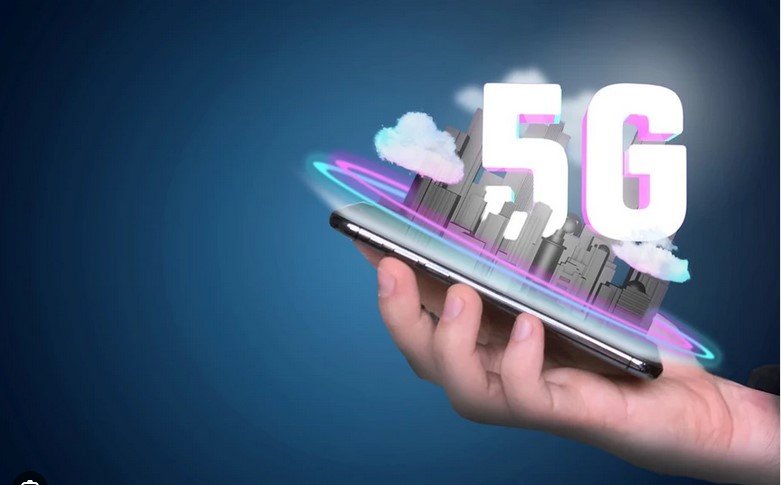The rise of 5G technology is transforming how we stay connected. As the next generation of wireless communication, 5G significantly improves speed, latency, and capacity over its predecessors. With its potential to revolutionize industries, 5G is driving innovation in various sectors, from healthcare to entertainment, while enhancing our everyday connectivity. Understanding the impact of 5G on connectivity can help individuals and businesses prepare for a more connected future.

What Makes 5G Different?
At its core, 5G is a massive leap in wireless technology. Unlike 4G, which was primarily designed for mobile phones, 5G is built to support a much wider array of devices and services. One of the most immediate impacts of 5G on connectivity is the dramatic increase in speed. It’s estimated that 5G can be up to 100 times faster than 4G, with download speeds reaching up to 10 gigabits per second. This means that tasks that once took minutes, like downloading a movie, can now be completed in seconds.
Another key difference is the reduced latency or the time it takes for data to travel between devices. With 5G, latency drops to just 1 millisecond, creating near-instantaneous connections. This is particularly impactful for real-time applications such as online gaming, video conferencing, and virtual reality (VR), where delays can disrupt the experience.
Enhanced Connectivity for the Internet of Things (IoT)
One of the most significant impacts of 5G on connectivity is its ability to handle a vast number of connected devices simultaneously. As the Internet of Things (IoT) expands, with more devices like smart home systems, wearable tech, and connected vehicles coming online, 5G provides the necessary infrastructure to support this growth.
With 5G, IoT devices can communicate more effectively, enabling smarter cities, more efficient energy management, and improved healthcare systems. For example, in healthcare, 5G connectivity can power remote surgeries and real-time monitoring, allowing doctors to provide care from a distance without the risk of delayed data transmission. In agriculture, connected sensors powered by 5G can track crop conditions and optimize water usage, leading to more sustainable farming practices.
5G and the Future of Mobile Connectivity
The impact of 5G on connectivity is most apparent in mobile technology. With faster speeds and better performance, 5G enhances everything from mobile browsing to video streaming. Users can enjoy ultra-high-definition video, lag-free gaming, and seamless multitasking on their mobile devices. Additionally, 5G’s improved network reliability means fewer dropped calls and stronger signals in densely populated areas, even during major events where network congestion is common.
The rollout of 5G also introduces opportunities for new mobile applications that were previously impossible. Augmented reality (AR) and virtual reality (VR) experiences will become more immersive and accessible, offering enhanced entertainment options and even new ways to shop or learn.
Boosting Business and Industry
The impact of 5G on connectivity goes beyond personal devices; it is transforming industries. Businesses can take advantage of 5G to streamline operations, improve communication, and innovate with new technologies. For instance, in manufacturing, 5G enables automation and the use of smart machines that communicate in real-time. Factories can become more efficient, reducing downtime and improving safety with remote monitoring and predictive maintenance.
Logistics companies can use 5G to track shipments more accurately and optimize routes, leading to faster deliveries. Retail businesses can enhance customer experiences with AR, virtual try-ons, and personalized shopping experiences powered by 5G networks.
5G’s lower latency and high capacity also make it ideal for the deployment of autonomous vehicles, which rely on real-time data processing. This can revolutionize transportation by reducing accidents, improving traffic flow, and even creating new mobility solutions like flying taxis.
Challenges in 5G Adoption
Despite its benefits, the 5G connectivity impact will take time to realize, as infrastructure and devices capable of supporting 5G need to be widely adopted. Deploying 5G networks requires significant investment in new infrastructure, particularly in rural areas, where coverage might lag behind urban centres.
There are also concerns about the security of 5G networks, as more connected devices and faster speeds create more entry points for cyberattacks. Additionally, businesses and consumers may face initial costs associated with upgrading devices to be compatible with 5G technology.
Conclusion
The impact of 5G on connectivity is profound, transforming how we interact with technology and each other. From enhancing mobile experiences to powering the IoT, 5G is driving innovation and efficiency across multiple sectors. As more industries adopt 5G, its true potential will become even more apparent, paving the way for a more connected, automated, and intelligent world. While challenges remain, the promise of 5G makes it a pivotal force in shaping the future of communication.











